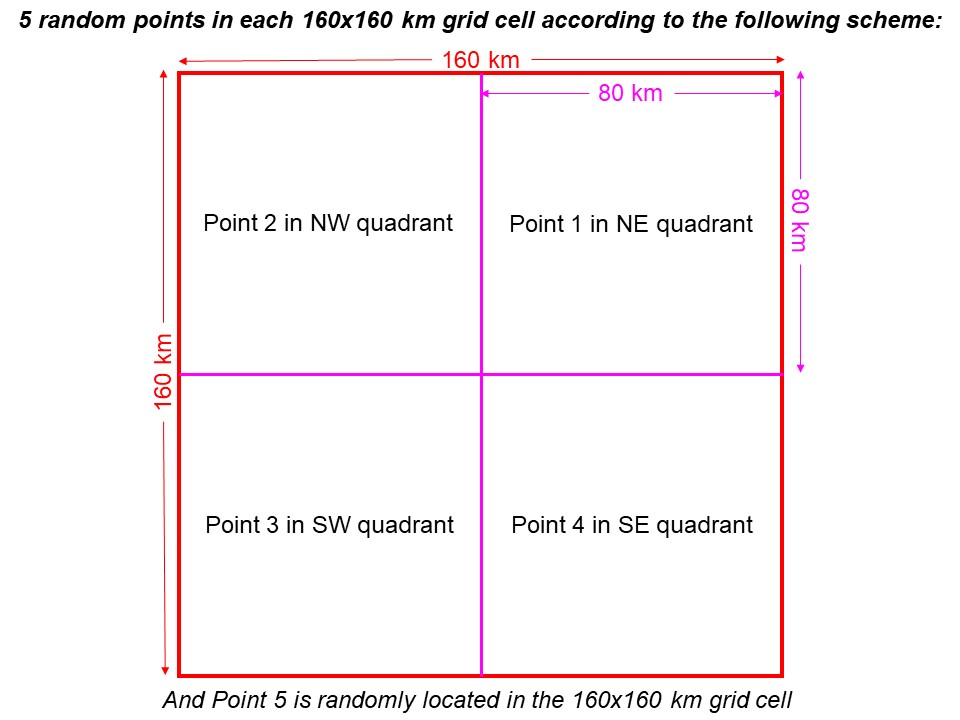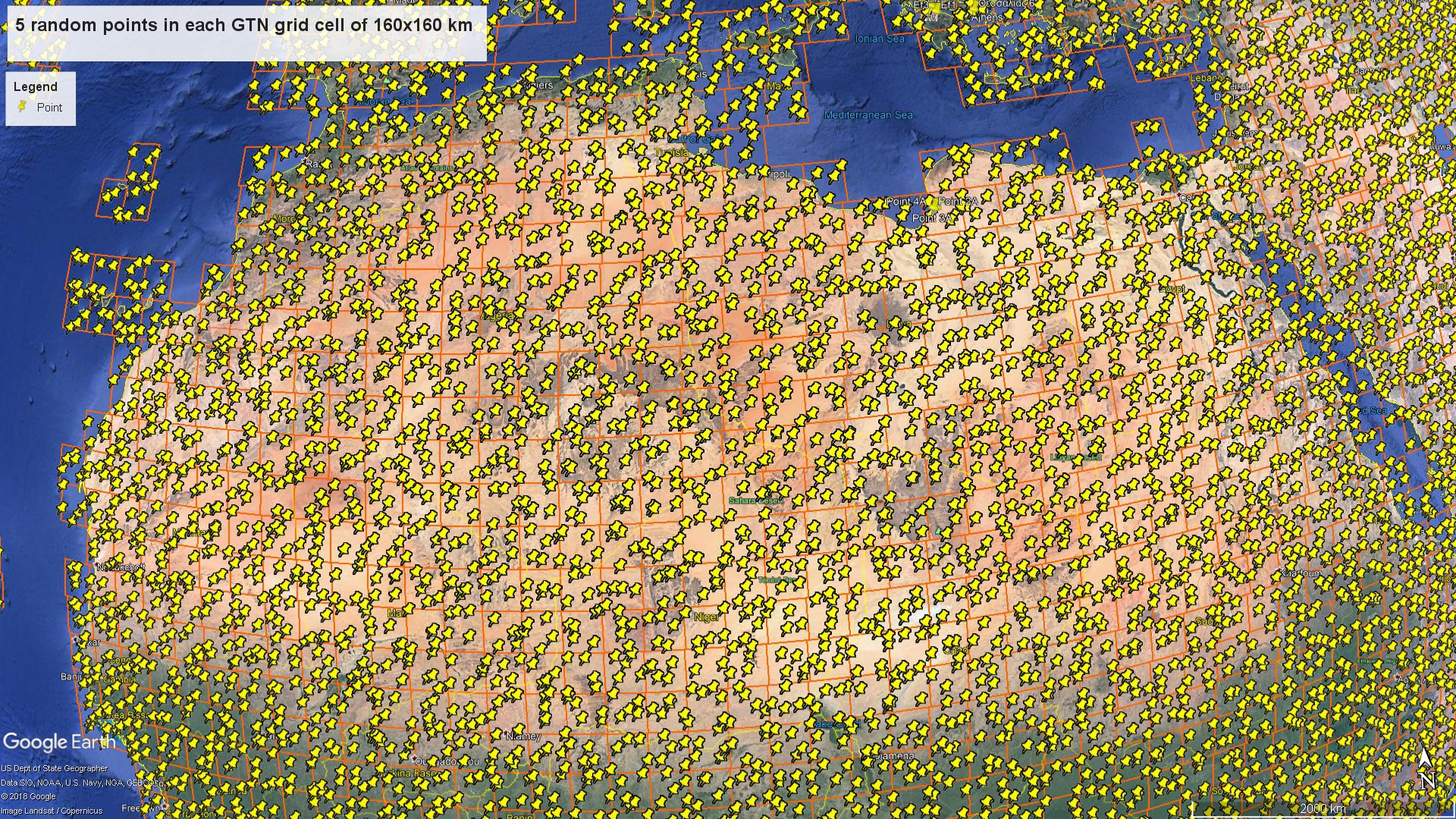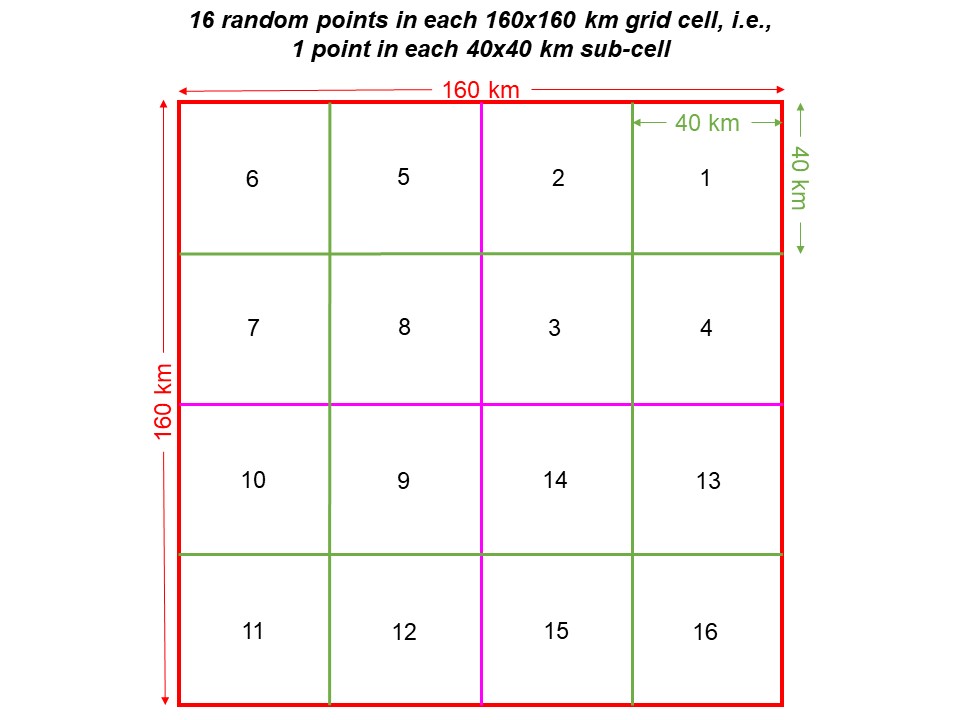Sampling Design
Files for downloading:
-
Microsoft Excel Workbook of 5 randomly selected points in each GTN grid cell of 160x160 km
-
Google Earth *.kml file of 5 randomly selected points in each GTN grid cell of 160x160 km (zip file)
-
Microsoft Excel Workbook of 8 randomly selected points in each GTN grid cell of 160x160 km
-
Google Earth *.kml file of 8 randomly selected points in each GTN grid cell of 160x160 km (zip file)
-
Microsoft Excel Workbook of 16 randomly selected points in each GTN grid cell of 160x160 km (Not recommended for the Global Geochemical Reference Network project)
-
Google Earth *.kml file of 16 randomly selected points in each GTN grid cell of 160x160 km (Not recommended for the Global Geochemical Reference Network project - zip file)
==========================================================================
Random sampling design
The sampling points in each Global Terrestrial Network (GTN) grid cell of 160x160 km are totally randomised and are not designed to show the lowest natural background concentrations in the global terrestrial environment, but to demonstrate the current geochemistry of the surface and sub-surface environment.
Some GTN cells are located in more than one country. In these cases, the sampling of that particular GTN grid cell is coordinated by the country (organisation) in which the centre of the grid cell is located. The coordinating countries are indicated in the GTN grid cell list.
Important note: Participating surveys should not carry out any sampling on the territory of any other country without agreement with the organisation responsible for sampling in that territory. If one or more of the randomly selected catchments are located in the neighbouring country, please contact your neighbour Survey and agree on sampling of those sites.
Random sample sites in each GTN grid cell
In the case of the 5 point random sampling design (see Figure below):
-
point number 1 is in the NE quadrant of the GTN grid cell,
-
point number 2 in the NW quadrant,
-
point number 3 in the SW quadrant and
-
point number 4 in the SE quadrant.
Point number 5 is randomly located in the GTN grid cell.

In the case of the 8 point random sampling design, there are 2 random points in each quadrant of the GTN grid cell (see Figure below):
-
point numbers 1 & 2 are in the NE quadrant of the GTN grid cell,
-
point numbers 3 & 4 are in the NW quadrant,
-
point numbers 5 & 6 are in the SW quadrant, and
-
point numbers 7 & 8 are in the SE quadrant.
In the case of the 16 point random sampling design, there are 4 random points in each quadrant of the GTN grid cell (see Figure below):
-
point numbers 1, 2, 3 & 4 are in the NE quadrant of the GTN grid cell,
-
point numbers 5, 6, 7 & 8 are in the NW quadrant,
-
point numbers 9, 10, 11 & 12 are in the SW quadrant, and
-
point numbers 13, 14, 15 & 16 are in the SE quadrant.
Important Note: This is not a recommended sampling design for the establishment of the global Geochemical Reference Network. It can be used, however, by countries that would like to carry out a higher sampling density wide-spaced geochemical survey using a random design.
The Google Earth image below shows the distribution of the 5 random sampling points in each GTN grid cell of 160x160 km in North Africa.






